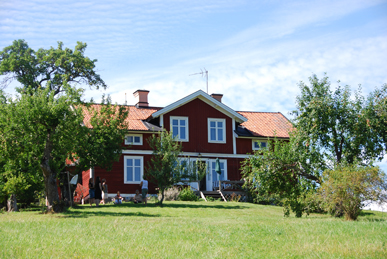My beloved wife chastised me for writing that I didn't have much
to look forward to (
here). I admit that that was only partly true.
I meant that I didn't have anything like a full-scale production in
front of me.
A few fun things have happened, though.
Katarina and I were engaged to sing on a Tallinn cruise. I was
really supposed to ride along, but since we enjoy singing, we
promptly decided that I should be part of the program. Such
"coups" are always a bit scary, since they can backfire if the
customer ends up thinking that I didn't contribute to the
enjoyment. Or maybe that's just me thinking that I'm still
not good enough for professional engagements... As it was,
I only participated in a duet ("Rosen in Tirol" by Zeller) and
one aria ("O Paradis", by Meyerbeer). It went quite well,
though, and I felt like a real pro... almost.
The next occasion was our traditional Christmas concert,
now in a new church (since we have moved). It was well
visited, and people seemed pleased. I sang some Christmas
hymns, and some arias from Händel's Messiah (Comfort ye
and Every Valley). We recorded it, and listening to the
tape, I was horrified! I was singing out of tune on several
occasions. My wife insisted that I wasn't, and she has a
good ear...
Enter Lucy Manén's Bel canto book. She observes (pg 50) that
The high harmonics of the imposto mechanism, not only
give to all the vocal registers the beauty and brilliance
of Bel Canto; they also ensure that the voice will sound
in tune to a distant listener (without adequate brilliance,
a distant voice will often sound flat even when, heard
from near by, the notes seem correctly pitched).
When I checked the parts of the tape where I recalled emphasizing
the higher harmonics, the voice didn't sound flat. I had focused too
much on creating a full voice, and forgetting about the brilliance.
Oh, well. Let's hope the one's in the back didn't have such good
ears...
(If you want to know what imposto is, read the book, or go see
your local Bel Canto teacher.)
Later, Katarina and I gave a recital in Oxelösund - Church coffee
for the senior members of the congregation. Katarina grew up in
Oxelösund, so she has a tendency to sell out when she visits. So
it was this time too. The church was full and we had a great
time. I sang Ah, fuyez... from Manon - a terribly difficult aria,
but I never did have the good sense to go for the easy wins.
The challenge with Ah, Fuyez is that you have to be able to
express several different and conflicting emotions. De Grieux
prays to be rid of the obsession with Manon, and curses the
world and his misfortune, but really, he doesn't want anything
other than to be with her - but he does sincerely long for the
peace of God too, and he keeps shifting in and out of these
emotions. To add some complexity, it's in French, which I
don't know, and the tessitura is terribly high.
Bel canto to the rescue. If you're able to produce the sound
with a lowered larynx, whatever you feel will be strangely
amplified (because the emotional colorings of the voice
emanate from there.) So if you take the time to really
understand what you're singing, you will be able to portray
the proper emotions (obviously there is more to a great
interpretation than that, but just the basics will get you
surprisingly far). The 'imposto' thingy helps anchor the high
voice especially, which saves you when De Grieux first
utters his "ah fuyez" in a piano G. Also, you can bring on
the crying in the
ff exclamations - as long as you keep your
position and let the body provide (as Bengt keeps telling me).
The truly amazing feeling is that you can go all out, both with voice and emotion, as long as you keep directing the force the right way.
For fun, I later decided to try singing it unsupported (actually,
still much more supported than I ever sang before I went to
Bengt three years ago). I found that I could produce a cool-
sounding timbre, and sing loudly enough, but when trying to
convey emotions, the voice suddenly felt like a wall between
me and the (imaginary) audience. I started realising why many
singers are left with just varying the volume, phrasing and
attack. What else can you do?
I decided to quit experimenting and return to practising the
real thing. I don't master it well enough to goof around.
Then we did some Nemorino/Adina, "Caro Elisir". Fun stuff.
I need to find more opportunities to sing on stage.







